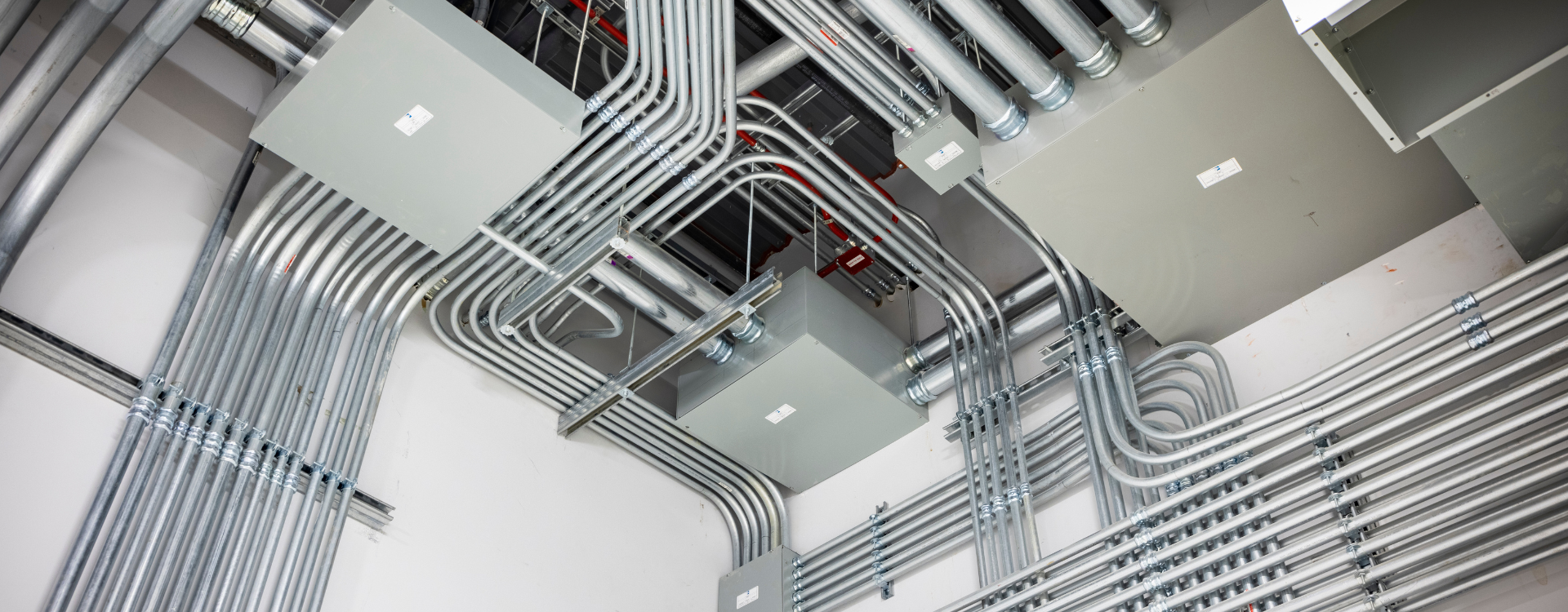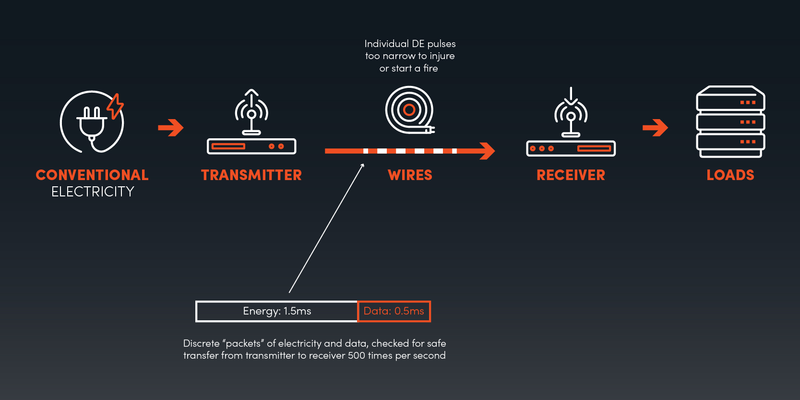
Fault managed power (FMP) has become a topic of increased interest in electrical construction projects over recent years due to rising popularity and demand for larger project applications.
Michael Starego, PE, Principal Electrical Engineer at Southland, was first exposed to FMP at a tradeshow for controlled environment agriculture in Las Vegas, Nevada.
"FMP has received more attention in the last several years with larger project applications, and now there is a new article in the 2023 version of the National Electrical Code, defined as Class 4 Power (Article 726)," Michael said.
Since the initial exposure to FMP at the tradeshow, Michael has partnered with Stephen Eaves, CEO of VoltServer and inventor of FMP, to dive deeper into the use of FMP on construction projects.
What is Fault Managed Power (FMP)?
FMP, or Class 4 power, is a state-of-the-art power distribution system that safely delivers high power levels over long distances while reducing the risk of fire and shock. It converts alternating current (AC) power to high voltage direct current (DC) power through a solid state, enhanced rectifier, known as a transmitter.
AC is an electric current that periodically reverses direction and changes its magnitude continuously with time, while DC flows only in one direction. The transmitter pulses the DC power in 2-millisecond "packets," consisting of a 1.5-millisecond high-voltage DC power pulse (336V) followed by a 0.5-millisecond pause or gap. At the destination, a receiver device converts the pulsed DC power to the required load type. The receivers, designed to match the load demand, convert pulses into various DC voltages or even AC power, up to 277V, with 480V capabilities in development.

"This inherently safer form of electricity simplifies electrical construction and maintenance because it installs with the same practices as data cabling, using IT installation practices," Michael said.
Benefits of Fault Managed Power
Efficient transmission and range
FMP uses lightweight, low-gauge cables, differing significantly from power over ethernet (POE). POE is limited to 100 W per cable and constrained by a 100-meter distance limit, necessitating ethernet switches throughout a facility. In contrast, FMP can deliver up to 2 KW per pair of #16 AWG conductors. Additionally, an FMP cable can transmit power over 500 feet and, in some applications, reach up to 2 kilometers.
“This means an 8-pair #16 multiconductor cable can deliver 16 KW of power in a single 0.75" diameter cable without the need for expensive and labor-intensive conduit routing,” Michael said.
Streamlined installation process
FMP allows for wiring methods, such as cable trays and j-hooks, which are quick to deploy and can also be installed by technicians rather than licensed electricians, reducing labor costs. This helps address the shrinking pool of skilled tradespeople that the construction industry is facing.
Enhanced safety
FMP represents a safer power distribution than other methods. The transmitter continuously verifies the pulse reaching the receiver and immediately shuts off the power if any anomaly is detected.
“Safe power distribution was the catalyst thought that drove the inception of FMP. Touching a live wire is not completely without sensation (yes, I’ve done it), but it will not injure you. After the transmitter, you no longer have arc flash concerns,” Michael said.
Market demand
One might jump to the conclusion that the disruptive nature of FMP technology would make electrical trade groups nervous, but today’s electrical workforce is highly sophisticated, forward-looking, and seeking out new technologies that will pave the way into the next century.
Monitoring
A supplemental electrical power management system is no longer needed. Power monitoring is inherent to the system and all power data is available in the software without the need for supplemental devices, wiring, or equipment. This provides significant cost savings.
"When a disruptive technology like FMP first emerges, it's understandable that customers may be cautious and adopt a 'wait and see' approach. However, it's important to highlight that VoltServer has a decade-long track record of installing FMP in critical communications infrastructure. Additionally, the advantages FMP brings to the data center environment — such as enhanced safety, reduced costs, increased power density, and faster installation — offer significant value in exchange for the perceived risk," Stephen said.
Applications of Fault Managed Power
FMP is aligning with the evolving needs of construction companies, offering innovative solutions that fit seamlessly into current practices. A dedicated article for fault managed power was adopted in 2023, and installations have reached over 1,000 buildings globally. FMP has also been deployed in factories, hotels, offices, airports, conference centers, and large indoor agriculture facilities. Many of the installations support critical power infrastructure.
Michael stated, "A challenge with FMP is that its application is not as versatile as traditional AC power. Each application type must be evaluated to determine practicality and to what degree the advantages can be leveraged instead of AC power."
To learn more about applications of fault managed power in data center projects, read Utilizing Fault Managed Power Systems (FMPS) for Data Center Power Distribution.
Senior Content Marketing Strategist
As Senior Content Marketing Strategist, Lindsay Janssen manages our content lifecycle. From ideation, creation, and editing through distribution, measurement, and maintenance, and creating a content strategy, she develops new and innovative ideas for our digital marketing channels.




